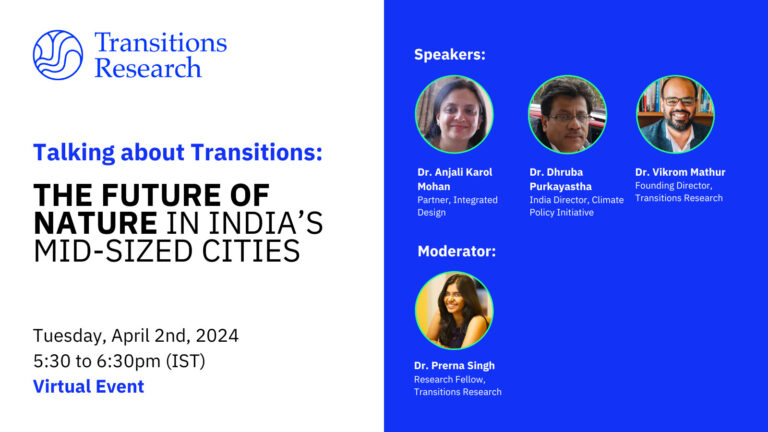Future Cities
By 2050, the global urban population is expected to increase by 2.5 to 3 billion of which the majority of residents will live in small to medium sized cities in the developing world. There are few places where this demands as much attention as India as more urban growth is taking place in small to mid-sized cities. This changing trend in urbanization desperately warrants a shift in policy discourse towards growing mid-sized cities. Indian cities require new visions of the future to confront challenges of the 21st century.
Adaptation and Urban Resilience
Historical patterns of urban development in India have exacerbated both physical and social vulnerabilities that communities face due to threats from climate change. While resilient cities are a dominant discourse for tackling these risks, this narrative has prioritised technical responses, such as climate proofing infrastructure, over addressing social vulnerabilities. How can we reimagine community driven resilience solutions?
Low Carbon Pathways
Urbanisation is a major driver of greenhouse gas (GHG) emissions in India and across the globe. Besides generating GHGs from buildings and transportation, cities are recipients of goods and services, the production of which likely involves emissions elsewhere. India’s ability to transition to low carbon futures is essential to ensure the achievement of the Sustainable Development Goals and targets of the Paris Accord. How do we support cities in mitigating their emissions and transitioning to a low carbon future?
Digital Transformations
With the rise of the Smart Cities movement in India the deployment of digital infrastructures to solve complex urban challenges has been normalised. Digital technologies can help improve service provision, monitor development and even mitigate carbon emissions. However, without frameworks of responsibility, issues of equity, privacy and justice will be overlooked. How can cities champion inclusive innovation while critically examining the social dimensions of technological change?
Access and Inclusion
Processes of city making and urban planning have neglected the needs of marginalised communities. Inequities of caste, religion, and gender and income shape access to urban spaces. These inequities are often compounded and manifest in poor service provision, inadequate and segregated housing and even discrimination and violence against communities. How can we strengthen urban systems to make them accessible and inclusive for everyone?
This episode of Talking about Transitions, explored the future of nature in growing cities and their role in reducing impacts of climate change as well as protecting the needs and aspirations of the vulnerable communities.
People’s Urban Living Lab (PULL) and Travelling Dome are hosting a series of Imagination Walks to envision what Panaji’s future looks like. Will we achieve our net zero pledge by 2050? What will our built environment look like? Where will our waste go? What will the role of nature be? Join us for a series of walks from March 15 to 17, 2024 to help us co-create shared visions for the future of our city.
For more effective low carbon mobility transitions, there is a need to consider the interlinkages between EV policies and urban mobility plans, policies governing energy transitions and carbon emitting sectors, consumer uptake, and lifecycle carbon emissions for EVs.



